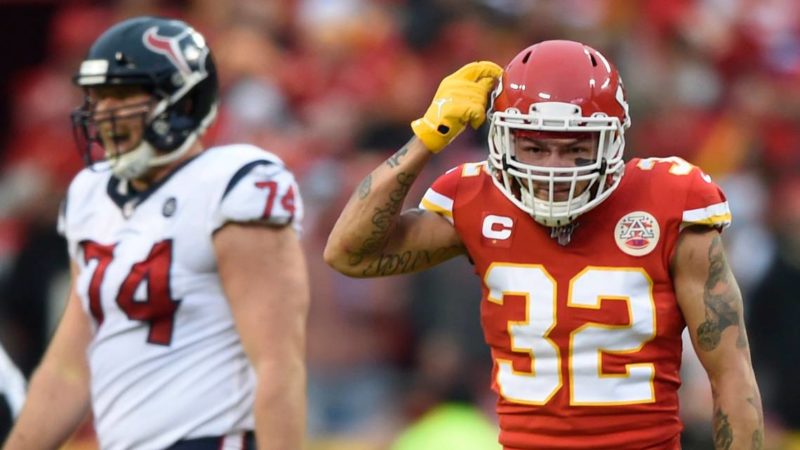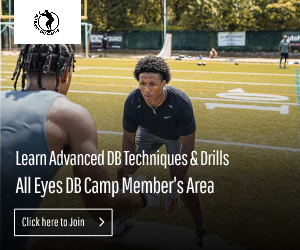On the surface, when you are just starting out playing defensive back in the secondary, covering wide receivers and making plays can seem difficult. However, as with all seemingly difficult tasks, breaking them down into smaller pieces can help you complete the mission.
When it comes to playing in the secondary, both individually and collectively as a unit, there are some basic yet very important things for you to remember. Keeping these things foremost in your mind can help you move with confidence and make plays versus the offense.
Divide the Field
Defensive backs often divide the field into sections or zones, assigning each defender to cover a specific area. This helps prevent receivers from exploiting gaps in coverage and ensures that every offensive player is accounted for. There are some 15 or more passing zones when you line up on defense. Being aware of these zones will allow you to have proper communication with your fellow defenders and understand the coverages that your coach calls. Terminology is a big part of football, and knowing it is in your best interest.

Divide by Alignment
DBs may use the alignment of the offensive players to determine their coverage assignments. For example, if there are multiple receivers lined up on one side of the field, each defensive back may be responsible for covering a receiver based on their alignment (e.g., inside or outside leverage). Also, understand that your alignment against a receiver may change within a coverage based on where the receiver lines up. Smart defenses use divider rules to have their defensive backs align in a way that gives them the best help from either other players or boundaries of the field (i.e., sidelines).

Learn Route Combinations
Defensive backs can anticipate route combinations based on the alignment and tendencies of the offense. By recognizing common route combinations (such as pick plays or crossing routes), DBs can adjust their coverage to effectively defend against them. The more route combinations you know, the quicker you can react on the field. In route combinations, one receiver’s route relates to another receiver’s route. Knowing the combinations can allow you to get clues from a receiver you are not covering on the route of a receiver you may be covering. Anticipation is a superpower when covering so knowing how combos fit will give you that power. I discuss route combinations in the All Eyes DB Camp Member’s Area.

Know the Receiver’s Skill Set
Defensive backs may tailor their coverage techniques based on the skill set of the receiver they’re covering. For instance, if a receiver is known for his speed, the DB may use press coverage to disrupt his release at the line of scrimmage and prevent him from getting downfield. In the article ‘Play to Your Strengths,’ I discuss this concept. A defensive back should know his strengths and weaknesses as well as those of the people he is covering. Match your strengths against your opponent’s weaknesses as much as you can on each play. Consistently being able to do this will give you more victories in coverage.
Have Situational Awareness
DBs must also be aware of situational factors such as down and distance, game clock, and field position. This awareness can influence their coverage techniques and help them anticipate the offense’s intentions. If you have any hopes of being a good defensive back, then this is a must. This is the most basic knowledge you should have on each play. You can’t run around playing the game without information. Every snap can’t be a surprise. Having situational awareness allows you to limit the possibilities of what may be coming your way. Fewer possibilities equal better anticipation. Better anticipation leads to quicker movement and more interceptions.
Provide Effective Communication
Effective communication among defensive backs is crucial in man coverage. DBs must communicate pre-snap to ensure everyone knows their coverage assignments, and they must continue to communicate during the play to switch assignments if necessary or to alert teammates of potential threats. The more you talk, the more information that is given. More information means better decisions not only by you but by your teammates. Football is the ultimate team game, and if you are going to win on defense, then communicating is a must. Engage in this practice as much as you can. The best secondaries study together and communicate well when the action starts to flow.
By making these six things together: divide the field, divide by alignment, learning route combinations, knowledge of receiver skill set, having situational awareness, and effective communication, you will have no choice but to be a solid player for your team. Furthermore, your entire unit will become a force to reckon with when offenses try to attack and find the end zone.
Chad Wilson is the owner of All Eyes DB Camp and author of "101 DB Tips". He played college football at the University of Miami and briefly in the NFL for the Seattle Seahawks. Over his 15 year high school football coaching career, he tutored over a dozen Division I defensive backs and as a trainer has worked with NFL All Pros, first round draft picks, college football All Americans and Top 10 ranked high school football prospects.









